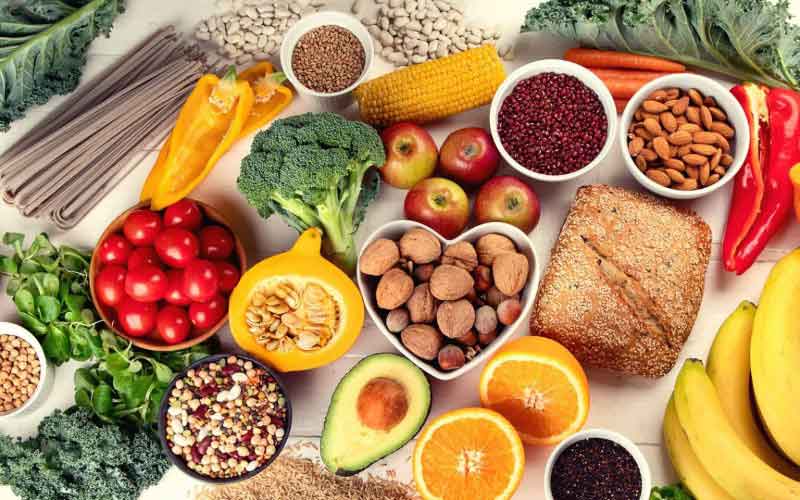Are You Consuming Enough Fibre?
Fibre is one of those essential nutrients that often flies under the radar, yet it plays a crucial role in maintaining good health. Found in plant-based foods like fruits, vegetables, whole grains, and legumes, fibre is the part of these foods that the body cannot digest. While it might seem like an odd thing to recommend, this indigestibility is exactly what makes fibre
Why Fibre Matters
Fibre promotes digestive health by adding bulk to the stool, which helps prevent constipation. It also supports a healthy gut microbiome. Soluble fibre, in particular, dissolves in water and forms a gel-like substance, which helps slow digestion and regulate blood sugar levels, making it especially beneficial for people managing diabetes. Insoluble fibre, on the other hand, adds bulk to the stool and helps food move through the digestive system, aiding in regular bowel movements.
Fibre, Microbiome, and Short-Chain Fatty Acids (SCFAs)
When fibre reaches the colon, it becomes a food source for the beneficial bacteria in your gut, which play a crucial role in overall health. These bacteria ferment the fibre, producing short-chain fatty acids (SCFAs) as a byproduct. SCFAs, such as butyrate, acetate, and propionate, are vital for maintaining the health of the gut lining, reducing inflammation, and even supporting immune function. Research also suggests that SCFAs help regulate metabolism and may contribute to a lower risk of diseases like colorectal cancer. By feeding your gut microbiome with enough fibre, you’re essentially supporting the production of SCFAs and promoting a balanced, healthy gut ecosystem.
How Much Fibre Do You Need?
The general recommendation is around 25 grams per day for women and 30 grams per day for men, though most people fall short of this. Incorporating more whole foods like fruits, vegetables, oats, beans, and whole grains can help meet your daily fibre needs.
Getting Enough Fibre: Tips
- Start your day with fibre: Choose high-fibre breakfast options like oats or whole-grain cereals.
- Snack smart: Opt for fruit, nuts, or raw vegetables instead of processed snacks.
- Bulk up meals: Add legumes like beans or lentils to soups, stews, and salads.
- Whole grains over refined grains: Whenever possible, choose whole grain bread, pasta, and rice.
Fibre is more than just a digestive aid—it’s a key player in overall health. By including more fibre-rich foods in your diet, you’re not only improving your digestion but also protecting your heart, balancing your microbiome, and managing your weight.
Here’s an example of what 25-30 grams of fibre might look like over the course of a day:
- Breakfast:
- 1 cup of cooked oatmeal (4 grams of fibre)
- 1 medium banana (3 grams of fibre)
- Lunch:
- 1 cup of cooked lentils or beans (around 15 grams of fibre)
- Snack:
- 1 medium apple (4 grams of fibre)
- Dinner:
- 1 cup of cooked broccoli (5 grams of fibre)
This combination adds up to about 31 grams of fibre, slightly over the daily recommended amount for women, giving you an idea of how a fibre-rich day might look. It’s quite achievable with whole, plant-based foods.
Here’s an example of a typical day’s diet that falls short of the recommended daily fibre intake:
- Breakfast:
- 1 bowl of sugary cereal (1 gram of fibre)
- 1 slice of white toast with butter (0.5 grams of fibre)
- Lunch:
- Ham and cheese sandwich on white bread (1.5 grams of fibre)
- Bag of crisps (1 gram of fibre)
- Snack:
- Chocolate bar (0 grams of fibre)
- Dinner:
- Grilled chicken breast with mashed potatoes (2 grams of fibre)
- Side of white rice (0.5 grams of fibre)
This adds up to about 6.5 grams of fibre for the entire day, far below the recommended 25–30 grams. This type of diet, relying on refined grains and low-fibre processed foods, is typical for those who are not getting enough fibre. It highlights the importance of including whole grains, fruits, vegetables, and legumes in daily meals to meet fibre needs.
Here’s a list of great fibre-rich foods to help you boost your intake:
Fruits
- Raspberries (8 grams per cup)
- Pears with skin (6 grams per medium pear)
- Apples with skin (4 grams per medium apple)
- Bananas (3 grams per medium banana)
- Oranges (3 grams per medium orange)
Vegetables
- Broccoli (5 grams per cup, cooked)
- Brussels sprouts (4 grams per cup, cooked)
- Carrots (4 grams per cup, raw)
- Sweet potatoes with skin (4 grams per medium potato)
- Avocado (10 grams per avocado)
Legumes
- Lentils (15 grams per cup, cooked)
- Black beans (15 grams per cup, cooked)
- Chickpeas (12 grams per cup, cooked)
- Kidney beans (11 grams per cup, cooked)
- Green peas (9 grams per cup, cooked)
Whole Grains
- Quinoa (5 grams per cup, cooked)
- Brown rice (3.5 grams per cup, cooked)
- Barley (6 grams per cup, cooked)
- Oats (4 grams per cup, cooked)
- Whole wheat bread (2–3 grams per slice)
Nuts and Seeds
- Chia seeds (10 grams per 2 tablespoons)
- Flaxseeds (6 grams per 2 tablespoons)
- Almonds (4 grams per ¼ cup)
- Sunflower seeds (3 grams per ¼ cup)
- Pistachios (3 grams per ¼ cup)
High-Fibre Snacks
- Popcorn (3.5 grams per 3 cups, air-popped)
- Edamame (8 grams per cup, cooked)

